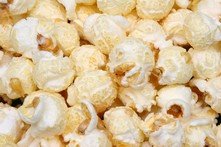Testing for Asbestos in Popcorn Ceilings
Barry Stone, Inman News
 DEAR BARRY: We just learned that the “popcorn” ceiling in our home contains asbestos.
DEAR BARRY: We just learned that the “popcorn” ceiling in our home contains asbestos.
DEAR DEBORAH: Many people have removed ceiling texture from their homes without knowing they were disturbing asbestos. To determine whether your home is contaminated with asbestos, you should hire a qualified asbestos inspector. Air samples should be taken from your home and from the surfaces of fabric-covered furniture and carpets; even from the shop vacuum that you used.
All samples should be evaluated by an accredited environmental lab. If the samples are positive, an asbestos abatement contractor should be contacted regarding cleanup.
The question of health effects to your family from asbestos exposure cannot be answered with certainty. The asbestos fibers your family members may have inhaled cannot be measured, and the eventual effects of those fibers, if any, cannot be predicted. Most cases of asbestos-related lung disease involve people who were exposed to high levels of asbestos for long periods of time, such as workers who mined asbestos or who handled it in manufacturing or construction.
Keep in mind, also, that everyone has been exposed to airborne asbestos fibers, whether they know it or not, and most people do not develop lung disease as a result of that exposure.
Fallacies about asbestos abound. For example, it is commonly believed that asbestos was banned from the manufacture of all products. Actually, it has been banned from many products, but not all. There are still building products, such as roofing mastics and flooring materials, that continue to be made with asbestos. Even some automobile brake linings still contain asbestos.
Another asbestos fallacy — involving “popcorn” ceilings — is perpetuated by many contractors and others in the building trades. It is the belief that asbestos ceiling texture was banned during the 1970s. Some say 1973; others say 1978. Both are wrong.
There was, in fact, a ban on the manufacture of asbestos ceiling texture in 1978, but installation of the material remained legal. Banning the installation would have caused financial loss to manufacturers, suppliers and contractors who had already invested in stocks of the product. The installation of remaining supplies, therefore, continued into the 1980s, when inventories were finally exhausted.
It should never be assumed that ceiling texture does not contain asbestos, based upon age or physical appearance. I recently witnessed a painting contractor pinch off a piece of ceiling texture, crumble it in his palm, examine it closely, and announce to the homeowner, “This does not appear to contain asbestos.” What the painting contractor didn’t know is that asbestos fibers are microscopic. A polarized light microscope is needed to determine whether asbestos fibers are present. Fortunately, the cost for lab analysis is very reasonable. Anyone planning to remove “popcorn” ceiling texture should have it tested before tampering with the material.
To write to Barry Stone, please visit him on the Web at www.housedetective.com.
Copyright 2009 Barry Stone
To subscribe to our blog, click here.















 Accessibility
Accessibility